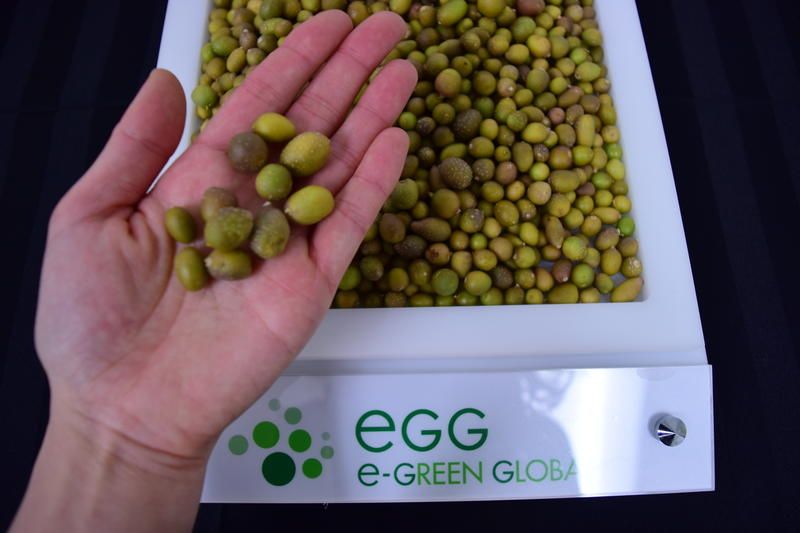When we hear the term ‘cellular agriculture’ these days, our minds typically wander to the production of cultivated meat and dairy.
But similar techniques also have a part to play in growing fruits, vegetables, and other crops.
South Korea’s E Green Global is starting out by creating potato seedlings from tissue cultures in the lab, and hopes to replicate the method with other crops in the near future.
Traditional seed potato production takes place in open fields – or in greenhouses, before being transplanted to the field; it is limited to one or two harvests per year; and it’s at the mercy of weather conditions, pests and diseases, and the wider impacts of climate change.
However, E Green Global’s ‘lab-grown’ seed potatoes start life in “bio-secured plant factories” which keep them disease-free, and can be continually harvested throughout the year.
The Seoul-based startup works on a contract-farming basis, or joint cultivation arrangements whereby it gives its “microtubers” to partner farmers as part of an investment deal.
Last month, it closed a $15 million Series B funding round. Among the participating investors was ADB Ventures — the VC arm of the Asian Development Bank — and YD-SK-KDB Social Value Fund, a South Korean impact fund backed by the Korea Development Bank, VC firm YellowDog, and conglomerate SK Group.
“E Green Global is the first company that effectively enables ‘lab-to-farm’ commercial seed potato production on a global scale,” Minsoo Kim, ADB Ventures investment specialist, said at the time.
“We believe [its] microtubers technology can supercharge efficiency for potato farmers and processors by enabling faster, better, and cheaper crops in Asia Pacific and across the $144 billion global potato market.”
AFN recently caught up with E Green Global CEO Keejoon Shin (KS) to find out more…
AFN: How does E Green Global’s technology work?
KS: EGG produces potato microtubers using an in-vitro ‘micropropagation’ method inside our ‘plant factory’ under a sterile environment.
The process starts from tissue culture; getting a virus-free stem out of the potato meristem and multiplying stems in an in-vitro setting. This process does not use any soil.
Using a dark room environment and unique methods, stems are induced to produce small-size potatoes — around 1 gram versus conventional seed potatoes of about 50 grams — during a three-month growing period. These potatoes are called ‘microtubers’.
Microtubers are then harvested and stored just like regular potatoes. [They] are sprouted and planted directly into open fields for the next generation seed potato production.
AFN: How is E Green Global’s solution different from those offered by competitors?
Let me briefly explain how the conventional method works. [It] starts by producing virus-free stems in a lab environment by tissue culture. Then, these stems are planted onto peat moss inside a greenhouse to produce first-generation potatoes called ‘minitubers.’ These minitubers are also called ‘G0’ [generation zero.]
As G0’s are expensive and limited in numbers, they are stored after harvest and replanted the following year in the open field. After 90 to 120 days, a G0 produces around eight to 10 potatoes, also called G1s.
G1s are again replanted the following year for G2. This process goes on until around G6, which is the final ‘seed potato’ to be sold to potato farmers. Final generation differs by each country – for example, in the US, it [goes until] G4 or G5. In the Netherlands it’s G9-plus; in Korea it’s G5.
The reason why seeds need to be multiplied for so many years is because seed volume and price can be met with market demand at around G6 level.
The key differences with our method are that there is no greenhouse; size [is much smaller]; propagation period is two years versus six or more years; and entire-year production is possible, with 365 days in the lab versus 90 to 120 days in the greenhouse.
AFN: What are the advantages (and disadvantages) of producing potato seedlings via cell-culture in a lab environment, rather than traditional cultivation or indoor farming?
One [advantage] is quality assurance. As microtubers are produced in a sterile lab environment without using any soil, they are free from all kinds of diseases such as viruses, soil- and water-borne diseases, bacteria, and fungus. A greenhouse is cleaner than an open field, but still cannot protect from all diseases 100%. One of key benefits of using microtubers are their cleanness and quality assurance.
Another advantage is mass production. As microutbers are produced in a plant factory where growing conditions such as lighting, temperature, humidity, C02 level, and media are completely controlled, they can be harvested every day. Greenhouses can be utilized only once a year, twice maximum in a few areas. Therefore, number of potatoes per given space is much higher under our microtuber method. High productivity brings down cost per tuber dramatically. This lowered cost again triggers a shorter propagation period; shorter cycles mean new varieties can reach the market faster. Customers like our time-to-market feature.
By eliminating the need for greenhouses, microtubers save water and have shorter storage times [leading to] energy savings. They also do not use chemical fertilizers and pesticides.
The microtubers’ small size allows for dramatic reductions in logistics costs. One Samsonite carrier full of microtubers can produce enough potatoes for one country.
And as microtubers do not touch soil until they are planted, import-export is possible with a phytosanitary certificate. Some countries, like the US and China, do not allow any foreign seed import. Other countries allow imports only when products pass their strict quarantine guidelines.
AFN: Why did the company decide to start with seed potatoes?
Potato is the fourth-largest food crop after maize, wheat, and rice. But, because of its high water content — which means short storage times — and the presence of foreign soil, which leads to strict quarantines, the traded volume is very limited; only 10% of total produce is being traded.
Therefore, the potato market is very much segmented, and potatoes are mostly locally produced and locally consumed.
Potatoes are quite susceptible to diseases that reduce final yield. Virus-free clean seed is critical for a country to increase its potato yield. However, due to trade issues, there is a big difference in yields between countries as it is difficult to get enough clean seed. Some countries have 100% clean seed — such as the US, and the Netherlands — whereas others, like most of those in Africa and many in Asia, have less than 5%.
Multinational companies are not in the potato market. The top five companies in the potato industry take up only 5% of market share, whereas wheat seed shows 68%.
We decided to start with potato as our main product because we believed we can provide a platform for the potato industry so that every countries’ farmers can get high-quality seed to improve yield and thus income. Also, we thought we had a better chance to do so [in this particular market] as there are not many big multinational companies competing in the potato market.
AFN: What are the key challenges the company faces as it looks to move into additional crops?
One is capital. As a small tech company, capital is always a challenge. R&D for other crops will require more people and R&D which requires capital.
Another is time. It took us more than six years to get validated by customers because we needed to make sure our products are commercially meaningful and safe to use. The markets for other crops must be similar. Whatever we do needs market validation that will take multiple years.
Understanding the market is another challenge. Some crops are very much locally driven and it is very difficult to gather meaningful information that can be applied globally. Local soil and climate differences require sophisticated product development plans. Lastly, being successful in one crop in one area does not mean another success in a different market environment with a different crop.




